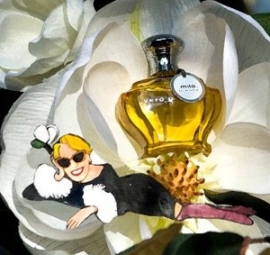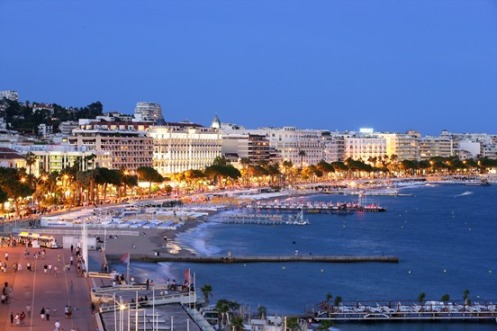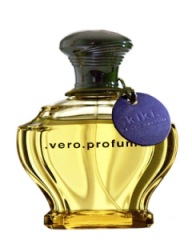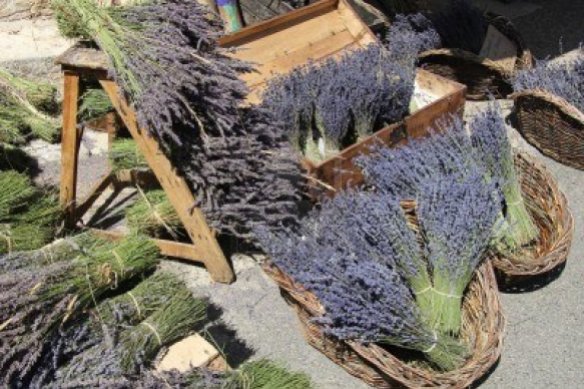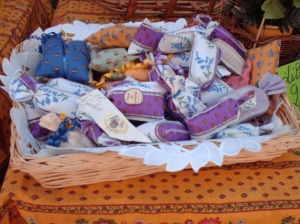The alluring beauty of tobacco, leather, honey, suede, florals, spice, smoke, fruits, and cream are given captivating movement in Naja, the long-anticipated new release from Vero Kern of Vero Profumo. The notes move like circular eddies in rippling water or like a sinuous snake weaving its way across the desert sand, because this is superbly crafted scent. It is also one of my favourite things created by Ms. Kern.
Tag Archives: Vero Profumo
Vero Profumo Rozy (EDP & Voile d’Extrait)
This is a tale of two cities in a land called Rozy. One has buildings hewn from peach and passion fruit with small indoor gardens where musky lovers frolic naked amidst purple hyacinths that bloom next to green lawns drizzled with honey. The other has small huts made from musky, earthy black currants with thatched roofs of white tuberose petals, overlaid with the black lace of camphorated smoke. This city is located deep within the heart of an Amazonian rainforest of salty vetiver drenched by tidal waves of sharp, sticky honey that pulsate animalism. One city is utterly magnificent, and I would live in it happily. Continue reading
Vero Profumo Mito Eau de Parfum: Effortless Italian Style
A vision of dappled green that is flecked with yellow and slowly turns to gold in a shimmering veil of crispness and sweetness. The most beautiful gardens, as simple as they are ornate, as refined as they are timeless. They are the gift of centuries past, and their beauty has been passed down from Renaissance princes to commoners today. A palatial garden whose essence has been distilled into tiny drops of perfume:
The warm air is pervaded by a pleasant sensation of white flowers, jasmine and newly blooming magnolias, garlands of moist moss, aromatic leaves and proud cypresses. Slowly the fragrance rises.
Up, up, higher and higher still, to join, all of a sudden, the crystalline jets gushing in the fountains and resting on the mirrors of water in the garden. Millions of miniscule water particles intertwine to create a shining, perfumed veil that rests on the cold marble shoulders of countless statues: gods, nymphs, fauns, dragons and mermaids. Time has stood still in the garden: yesterday is today is tomorrow.
For a moment the perfume fills our desire, satisfies our need for lightness and our yearning for better times. The myth of a timeless eternity.
That is the description of Mito from its creator, Vero Kern, the founder of the Swiss niche perfume house of Vero Profumo (sometimes written with unusual punctuation as “.vero.profumo.“). Mito is an eau de parfum from the chypre category that was released in 2012, and which was inspired by the stunning Renaissance gardens of the Ville d’Este in Tivoli, Italy. In an explanation provided by First in Fragrance, Ms. Kern says:
I was struck by its architecture, the splendour of the park where classical statues and fountains spring up out of the blue. In a sense it takes me back to my childhood, to the garden full of people and little statues where I daydreamed as a child. […] the scent of the water in the basins, of the white flowers, the grass, the moistness. The air is pervaded with elegance, mythology and an almost androgynous beauty that is both masculine and feminine at the same time. This garden smells of the Mediterranean and of Italy, of ancient and modern history, of echoes of a past not necessarily better than the present or the future. It fills me with calm and energy at the same time. That is why I am dedicating a perfume to it.
According to Luckyscent, Mito’s list of notes includes:
Citrus blend, magnolia grandiflora, white magnolia champaca, jasmine, galbanum, hyacinth, cypress blend, moss.
Mito opens on my skin with the darkest essence of green: foresty, bright, spicy, pungent, citrusy, zesty, refreshing, crisp, and crunchy, all at once. It’s a flood of galbanum, cypress, lemon, and even something a little more bitter and tart like lime — some of which feel concentrated to their very core. Mito is profoundly rich and opulent in its intensity, a tidal wave of the darkest types of green across the spectrum. Yet, it’s done in a manner that actually sparkles and which definitely calls to mind the source of the perfume’s inspiration, with diamond-like rivulets of water tossed into the air from ancient fountains and gleaming like crystals in the bright sunlight in front of a panoply of green. For all that galbanum can often (or usually) be pungently abrasive, arid, and sharp, the note here is uplifting, fresh, and infused with the sweet juiciness of sun-ripened lemons. The citrus is too intense to feel like the squirt of fresh juice; it feels more like the concentrated essence of a 1000 lemons, and perhaps three or four limes tossed in as well.
Within minutes, the bouquet is joined by a beautiful burst of oakmoss that feels so plush, it’s akin to the thickest, downiest Bavarian goose-down duvet. The note is fresh and bright but, to my surprise, it has an unexpected undertone of something minty. The oakmoss is never dusty, fusty, mineralized or grey in feel like some of the mosses in the old vintage chypres. Instead, it’s utterly alive and vibrant, almost springy, and the brightest of emerald-green. Joining it is a note of much darker green-black from the cypress. It’s subtle at first, but carries a slightly piney nuance that makes one think of towering, ancient trees bordering the edges of that lovely garden.
The whole thing evokes a dappled landscape of green, highlighted by touches of sweetly warmed yellow. I can’t emphasize enough how enormously bright, refreshing, crisp, brisk, and yet, also rich, heady, deep, and smooth Mito is in these opening minutes. Yet, to be a little honest, the concentrated nature of that lemony freshness also sometimes calls to mind liquid Joy lemon dishwashing liquid in its intensity. The image is fleeting, however, especially around the five-minute mark when a hint of something floral starts to lurk in the base. It’s indistinct at this point and very subtle, a blur of rich, white sweetness that hints at things to come.
Forty minutes into Mito’s development, the fragrance has softened to a cloud of sweet, sun-warmed citrus atop a quiet base of fresh, almost minty moss with dark woods. There is a gauzy, sheer veil of gardenia that wafts all around, as delicate as a small breeze. Down below, tiny flickers of cypress emit subtle hints of piney evergreen. Unfortunately for my personal tastes, the whole thing hovers right on the skin. In fairness, Mito seems intended to be a discreet, elegant, wholly unobtrusive, restrained skin scent that evokes Spring in the most elegant of Italian styles — and it accomplishes that in spades.
Wearing Mito, I cannot help but think of something other than those exquisite Villa d’Este gardens. I think of the Italian style in general, and of those ineffably elegant men and women who stride around in beautifully tailored clothes that scream effortless chic in a way that marks them as the direct, modern, fashion descendants of haughty Roman aristocrats in their elegant togas.
If you’ve ever been to Rome or Milan, you’ll known what I’m talking about. The men in their dark suits with crisp white shirts who reflect a classical ease that George Clooney has so successfully adopted. The long-legged women in their simple, sleek, dark dresses with large sunglasses and Audrey Hepburn simplicity who bypass all fashion constrictions to navigate their Vespas with nonchalant ease. Or the ones who stride about in long, flowy, draped clothes with Missoni-like patterns. They all have that intangible, somewhat aloof, restrained, luxurious, high-end minimalism that is elegance taken to a concentrated degree, but always done in the most effortless of ways. To me, that is Mito. Springtime in fashionable Rome, reflected through the greenness of the princely Villa d’Este gardens.
As time passes, Mito becomes increasingly floral, warm, and golden. At the end of the first hour, the gardenia note becomes more prominent and, slowly, quiet flickers of jasmine start to stir. By the 90-minute mark, magnolia comes out to play and, soon, takes over completely. Mito is now a lovely bouquet of creamy, velvety, lush magnolia trailed by jasmine and a very muted gardenia note, all atop a base of oakmoss and cypress. There is a subtle undercurrent of smokiness in the wood, a whiff of evergreen, and a lingering trace of something citrusy. The floral sweetness feels like a glowing light in a nestled embrace of green.
My skin always amplifies honeyed notes, and Mito is no exception. The honeyed undertone to magnolia, along with its lemony nuances, becomes increasingly prominent. The jasmine lurks at the edges, but Mito is largely a magnolia fragrance on my skin for most of its long shelf-life. From the end of the second hour, until its final moments, Mito is a gauzy, soft, restrained whisper of infinitely creamy, lush, lemony, honeyed magnolia with green notes. Initially, the latter can be teased apart into the moss and cypress’ piney-evergreen accords, but they blur into an abstract greenness by the start of the fourth hour. The citrus note lingers at the periphery for a while, as does the gardenia, but they fade away about 4.25 hours into Mito’s development. Something else takes their place, and it’s a soft, delicate vanilla tonality that lurks beneath the creamy, sweet magnolia. By the start of the fifth hour, Mito is a discreet, sheer shimmer of magnolia atop a base of green, vaguely mossy plushness with flickers of sweetness and muted vanilla. In its final moments, the fragrance is an abstract, creamy, sweet floral warmth. All in all, Mito lasted just short of 8.75 hours on me, with extremely soft, muted sillage throughout.
Mito is a beloved fragrance, and I can see why. It’s not to my personal tastes or style, but I think it’s rich, well-crafted, and infinitely elegant. A lot of people call it a deeper, richer, plusher cousin of Chanel‘s Cristalle, and I think that’s quite accurate. On Fragrantica, there is nothing but glowing reviews for Mito, and the blogosphere is equally positive. Everyone finds Mito to be the most wearable, easy, approachable Vero Profumo scent, and a number of people talk about its peachy heart amidst the mossy base. Take, for example, Bois de Jasmin whose four-star review reads, in part, as follows:
Mito feels like a soft breeze, an uplifting and bright perfume. It layers its tart citrus notes over the crunchy green of galbanum, and in the Eau de Parfum, the exhilarating sensation is particularly pronounced. But give it an hour on your skin, and it becomes velvety and warm. The green now fades into the white of jasmine petals and the yellow of ripe peach. Mito reminds me of Chanel Cristalle crossed with the ripe opulence of Rochas Femme, but the total is more than the sum of its parts.
… I find Mito to be the most wearable from the collection. It’s not overly demanding or flamboyant. If Rubj is the sultry Jean Harlow, Mito is the coolly elegant Grace Kelly. It has great tenacity, but its sillage is moderate, a plus or minus depending on how you like to wear your perfume. […][¶] It’s a luminous perfume from top to bottom.
Even though my experience with Mito was largely about the magnolia and had nothing to do with peaches, I think Bois de Jasmin has summed up the core feel of the fragrance. So, too, does The Non-Blonde whose perceptions of the fragrance seem a little closer to my own:
The fragrance opens with a herbal-citrus note, a bit of a green grass and a feeling of a morning breeze passing through wind chimes. The flowers in this garden feel faraway and a bit abstract. I admit that I didn’t get the magnolia until the weather cooled down considerably so that the blooming phase on the skin takes longer. Mito isn’t about the big Magnolia of the south (or even the one in my neighbor’s backyard), so the flower doesn’t distract from the green impression, just softens it and gives it a more abstract feel, all the way to the crisp and quiet wood and moss dry-down.
Vero Kern created a feel-good and beautiful perfume without compromising or coddling the wearer. I think of Mito as wearing an exquisite and very put-together outfit, accessorized to the nines, yet it has enough movement and flow that you don’t feel restricted, pulled or pinched, neither are the clothes wearing you. It’s that kind of an effortless elegance.
Yes, to borrow from both bloggers, Mito is effortless elegance done in the manner of a soft breeze. I think it’s very pretty, even if it’s not me, and a scent that would be perfect on both men and women alike. I can see George Clooney wearing Mito just as easily as I can see one of his well-dressed, leggy, interchangeable brunette girlfriends. Mito is approachable, versatile, and suited for those who prefer a more discreet, unobtrusive, gauzy, but rich fragrance that is always elegant. It’s not as haughty or cold as some green chypres can be, thanks to the warmth of its floral heart, and it’s not a flamboyant diva scent, but it’s the embodiment of springtime in Italy and a perfect homage to the Villa d’Este.
DETAILS:
Cost & Availability: Mito is an eau de parfum that comes in a 50 ml/1.7 oz bottle that retails for $215, £138 or €145 (often more from different European vendors). In the U.S.: Mito is available at Luckyscent for $200 for a 50 ml/1.7 oz bottle. (The Vero Profumo website does not seem to have an e-shop from which you can buy the perfume directly.) Outside of the U.S.: the Vero Profumo Facebook page offers a whole list of European retailers from Kiev, Russia, to Oslo, Norway, and Italy. It also adds: “Since 2010 distributed worldwide by Campomarzio70 in Rome Italy, in selective boutiques and perfumeries such as ROJA DOVE, Harrods Urban Retreat London, JOVOY Paris, Parfums Rares and many more. Campomarzio70, marketing@campomarzio70.it will inform you where you find the nearest retailer in your country.” In the UK, you can find all Vero Profumo perfumes at Harrod’s Roja Dove Haute Parfumerie, but there is no online website through which you can purchase perfumes. (It is not the same site as the Harrod’s website.) You can also find Mito (and the full Vero Profumo line along with samples) at London’s Bloom Perfumery which sells the fragrance for £138, along with samples. In Paris, you can find Mito at Jovoy Paris, where it retails for €145. In the Netherlands, you can find it at Leanne Tio Haute Parfumerie where it costs €150, but seems to be currently sold out. In Italy, you can find it at Alla Violetta boutique for €145, along with samples. Germany’s First In Fragrance sells Mito for €145, but they are currently sold out. The site also carries the complete Vero Profumo line, offers sample sets, and ship throughout the world. Samples: I obtained Mito from Surrender to Chance which sells the fragrance starting at $5.99 for a 1/2 ml vial.
Review En Bref: Vero Profumo Kiki Eau de Parfum
As always, my Reviews en Bref are for a fragrance that, for whatever reason, didn’t warrant one of my long, exhaustive, detailed assessments. In this case, it’s Vero Profumo‘s Kiki Eau de Parfum.
Kiki takes me back to my childhood. It returns me to the sun-drenched hills and promenades of Cannes, to the Croisette where we’d sit at Le Festival to have a sandwich, and to the hills where our villa’s long driveway was lined with enormous lavender bushes and mimosa trees. Sun, blue skies, the glitter of turquoise waters, the relaxing heat of a city made fragrant by the flowers that surrounded you everywhere — those are all parts of my childhood summers in Cannes, a city that is just a 15-minute car ride from Grasse whose famous floral fields have made it the perfume-making center of the world.
Unfortunately, not all aspects of that trip down memory lane are pleasant. My time in Cannes created a strong backlash against lavender that, at times, seemed to besiege me from every nook, cranny, drawer, cupboard, kitchen, restaurant, boutique, promenade, street, house, garden, market, and every other possible, conceivable location imaginable. It was well-nigh unbearable to someone with a sensitive nose, and it left a definite mark. Since that time, I cannot stand lavender unless it’s done really well and is not abrasive. That’s not the case for Kiki, a fragrance whose opening I briefly struggled with before it turned into a plain, pretty, banal blur.
Vero Profumo (sometimes written with odd punctuation as “.vero.profumo.“) is a Swiss niche perfume line that was established in 2007 with three pure parfums called Onda, Kiki, and Rubj. Kiki in Eau de Parfum form came along three years later, in 2010, and the new concentration had a new formula and notes to go along with it. This time, there was passion fruit — which is probably why Fragrantica puts Kiki in the “aromatic fruity” category. Luckyscent provides the full list of notes:
Lavender essential oil, bergamot, citron, passion fruit, lavender absolute, geranium, caramel, patchouli, musk.
Kiki Eau de Parfum opens on my skin with a sonic boom of sharp, pungent, herbal, almost medicinal, dried lavender. In less than a minute, however, it is infused by a strange, intense sweetness that just barely hints at being caramel. The bitter, harsh dried lavender of the sachets that plagued my childhood summers — the exact type of lavender I despise the most — is on full show here. It continues unabated for a few minutes until suddenly, drastically and quite dramatically, it starts to soften. It’s now slightly gentler, warmer, sweeter, rounder, and subtly flecked by a tart, tangy fruitness and by the merest floral whisper from the geranium.
The fruit notes are interesting. Fresh citruses are mixed into the tart, tangy, sweet, and slightly musky character of the passion fruit. Quickly, they start to infuse the lavender, creating a potent bouquet of bracing, sharp, pungently dry, forceful, but sweetly fragrant lavender with tart, sensuously musky passion fruit and general sweetness. The caramel, patchouli, and subtle, slightly spicy, floral tones of the geranium work in the background, having an indirect effect but never being forcefully noticeable in their own right. It underscores how well-blended Vero Profumo fragrances always are, but it also marks the beginning of something that becomes problematic later on: blurriness. We’ll get to that later.
Ten minutes into Kiki’s development, the only distinctive, individual notes are passion fruit and lavender ensconced in an amorphous, airy sweetness. It never feels as though there is full-on caramel in Kiki; there is nothing at all like the rich, heavy, unctuous gooeyiness of the caramel you find in desserts. Actually, it rather feels as though the caramel is infused with vanilla, whipped into a frothy, bubbly, foam-like airiness. It’s extremely pretty, but very subtle. So subtle that it fails to ever fully tame the forceful pungency of that lavender. Even with the sweet notes that infuse it, the lavender is still too much like those Grasse dried sachets of my nightmares with their sharp, abrasive, aggressive, herbal blasts that assault everything they touch. (Maybe I need therapy for my feelings of hostility towards the poor plant?)
Kiki continues its bilateral focus for a while longer. At the twenty-minute mark, the perfume is bracing lavender, soft lavender, sweetened lavender, and fruity lavender, lightly infused with sweet musk and sweetness. If my words sound repetitive and redundant, it’s because they’re meant to be. Kiki is primarily and predominantly one singular theme with only minor, subtle variations. In the background, hints of citruses twinkle like dainty, tiny lights one sees in distant hills. Soft patchouli darts around like a firefly. A very pretty, plush, warn, snuggly softness stirs at the base, feeling as cozy as a cashmere throw. The whole thing is subsumed into a very powerful, potent, forceful combination that is, simultaneously, very airy and very lightweight in feel. Objectively, it’s very pretty; intellectually, I can’t find any of it to be very complex or interesting.
Less than an hour into Kiki’s development, it all starts to turn a little hazy. The perfume’s texture feels creamy, soft, and smooth, but the notes are increasingly blurry. There are a lot of very well-blended perfumes where the elements don’t feel quite so nebulous, intangible, abstract and amorphous. At least, not quite so soon. Kiki has turned into an almost hazy blur of soft, sweet, musky floralness that just barely hints at lavender. Once in a blue moon, the vanillic caramel pops up like a ghost to feel a little more concrete, but it is incredibly fleeting. There is a sweet musk, presumably from the passion fruit, but it has no concrete basis. Even the hint of lavender feels like a flittering, darting thing that you’re trying to grab onto, but it keeps slipping away. It’s an exercise in frustration to pin anything down beyond the general, abstract, creamy, floral sweetness. Even Casper the Friendly Ghost has more structure to his shape and form.
That’s all there is to Kiki on my skin. For the next few hours, its mellow, creamy, floral sweetness darts about like a will o’ the wisp, becoming closer and closer to the skin. It’s a pretty smell, but it’s nothing more than that. The word “boring” actually comes to mind. Exactly 3.75 minutes into the perfume’s development, Kiki is nothing more than sweet, musky vanilla on my skin. It lingers on, soft as a gauzy whisper, for another few hours, then dies completely just over the 6.75 hour mark.
Some of you may think that I can’t objectively and fairly judge a perfume that is centered around a note I dislike so much. You may have a point. However, if reviewers only focused on things they knew they would like, then every magazine, newspaper or website would have to hire thousands of sub-specialists. That’s simply not reality. Perfume reviewing is, by its very nature, even more subjective than most fields, but that doesn’t mean my issues with a particular note automatically doom a fragrance. I loathe ISO E Super, but I’ve given good reviews for a number of fragrances with the dreaded note. I am not a passionate iris fan, but that hasn’t stopped me from loving a few perfumes built around it, either. And, regular readers will know that I have very much appreciated a couple of fragrances which showcased lavender. I gave enormous praise to Histoires de Parfums‘ 1725 Casanova, a lavender aromatic fougère which just barely straddles the gourmand category with its vanilla. It’s lovely enough that I’ve actually considered wearing it. I also greatly admired and liked Santa Maria Novella‘s Ambra which has lavender with neroli and birch tar. And I’ve adored a number of fragrances that have clary sage, a lavender-like plant, or which have featured lavender in conjunction with other notes. So, I don’t hate all perfumes with lavender, but they have to be really good ones to get over my lack of enthusiasm for the note.
At the end of the day, Kiki simply isn’t all that special in my opinion. What manifested itself on my skin was pretty, yes, but it’s neither interesting nor complex. I think the whole thing actually verges on the plain and banal. And that is a far greater problem to me than a brief twenty-minute struggle with the lavender at the beginning. So, Kiki is a complete pass. I’ll stick to Vero Profumo’s honey-vetiver chypre, Onda, whose complexities, nuances, range, and beauty made my jaw drop. It’s a brilliant fragrance that has my heartiest admiration, intellectually and emotionally. Kiki does not.





